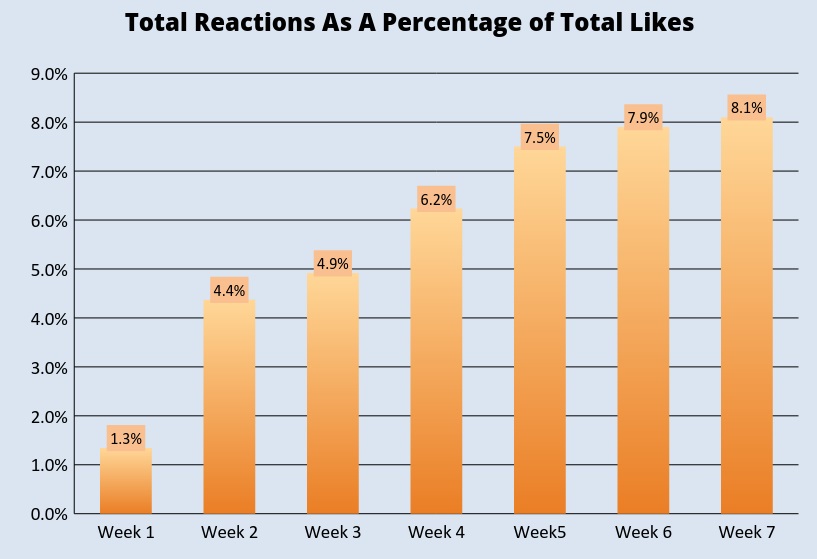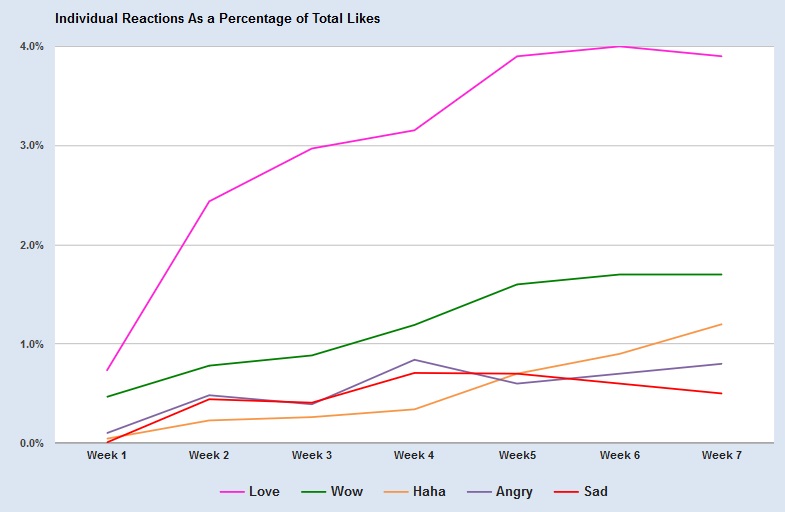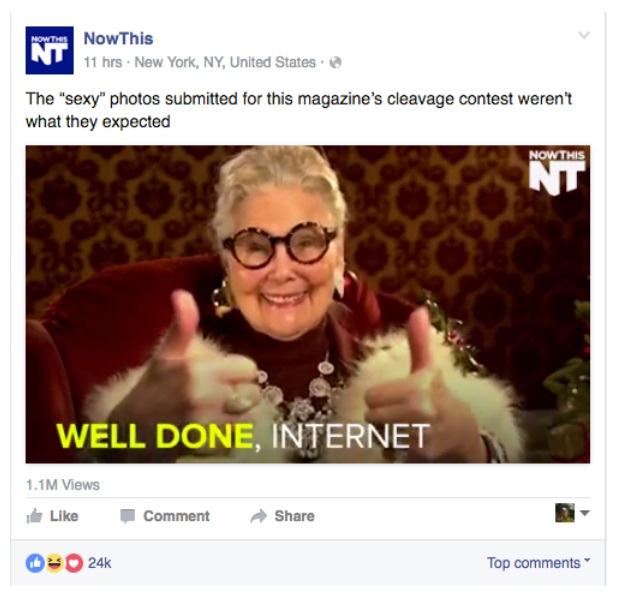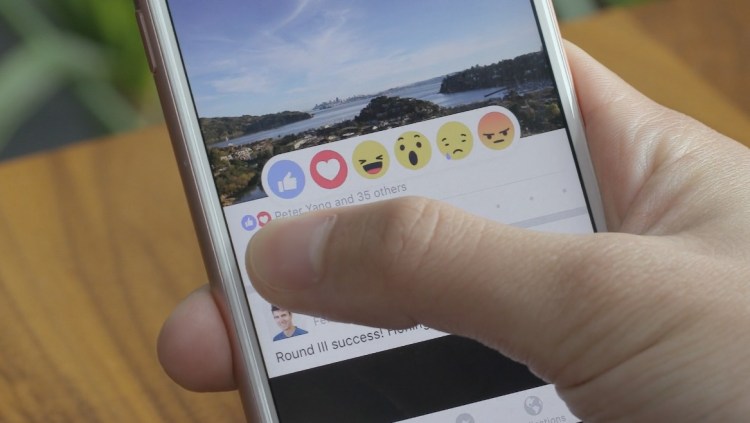Facebook recently launched “Reactions,” providing over 1.591 billion users worldwide with five new ways to more meaningfully express themselves.
The long-time solitary Like button has been joined by icons for Love, Haha, Wow, Sad, and Angry and they are becoming increasingly popular.

Now that users have more options for reacting emotively to posts, status updates, ads, videos, and images, how do social marketers need to adapt?
Sentiment is significantly easier to measure
Reactions allow marketers to gain a deeper understanding of how customers feel about our posts.
Prior to Reactions, brands were left with the tedious task of tracking user comments for positive and negative expressions. Since Facebook posts are not as open as Twitter, tracking sentiment was very difficult to do in a scalable way.
With Reactions, we can now immediately see what sentiment our posts evoke. In terms of social ROI, customer sentiment has now shifted from an unquantifiable metric to easily measurable data.
And brands are jumping on the Reactions bandwagon. Chevrolet, one of the first to use Reactions in its Malibu commercial, has marketers thinking how they can make the most of this massive marketing potential.
Which Reactions are most popular?
My company, LiftMetrix, has pulled together early user data on Facebook Reactions to learn how social marketers are using the buttons. Here’s a look at what we found:
Seven weeks in, Reactions make up about 8% of total Likes.

So far, Love is topping out as the most popular Reaction. But, with the option to wear more than just their hearts on their sleeves, users are starting to explore other Reactions too.
(Our data was compiled from over 100 large Facebook Fan Pages. Our data set is between 3,800 and 4,300 posts per week, for the seven-week period beginning on February 24 and ending on April 12. The reach (unique people who saw these posts) was between 335 million and 422 million per week.)

Just as a Love Reaction doesn’t guarantee a user will head out and buy your product, it’s important to remember that “negative’ reactions are not necessarily indicative of negative emotions. In terms of data displayed on the admin insights page, Angry and Sad are categorized the same way as Like, Love, or Wow; they are not classified under “negative feedback.”
For example, the following BBC video showing the destruction of Aleppo received 3.4k Sad reactions and 797 Angry reactions:

This doesn’t mean people are reacting negatively to the BBC. Users clearly feel strongly about the video and would most likely want to see more newsworthy content like this.
At this stage, all Reactions are good Reactions, as it signifies that your audience is engaged.
Measure the sentiment of your followers
Reactions are showing us so much more about our customers than the Like button ever did.
They’re changing the way users interact with posts, giving users the ability to express their emotions more clearly. Marketers no longer have to rifle through reams of comments (if you’re lucky enough to have that much data) or hire third parties to deduce customer sentiment from wording alone.
As Facebook Director of Product Marketing and Monetization Richard Sim told AdAge, “Reactions gives businesses a really crisp way of understanding on a multi-dimensional level how people are feeling about the things that they’re posting.”
Reaction counts are shown in the same spot the Like count has always been shown. You can see a breakdown of which users selected which Reaction by hovering over the count icon until a pop-up list appears.

Quantify the sentiment of your followers
Social marketers are able to generate reports based on what type of Reactions different posts and sponsored posts are prompting. By assigning values to these Reactions, marketers turn that customer sentiment into a quantitative metric that can be tracked. Combining qualitative feedback provided by comments and quantitative data shown by Reactions, marketers can now learn even more about their followers.
Unlike Twitter, which enables marketers to use machine learning to understand language and gives marketers access to sentiment through access to their API, Facebook now offers a simple solution to quantifying sentiment.
This the first time customer sentiment on Facebook has been a quantitative metric. It’s the biggest user experience change on the platform in some time, and it’s a really exciting opportunity for social marketers. Brands can now assign values to each reaction type, and they create a sentiment scorecard based on their objectives.
Use Reactions to increase social ROI
Measuring and increasing social ROI is even easier now that customer emotive responses are quantitative metrics.
Social marketers can correlate their KPIs to reactions. For example, video views are a central KPI for video publisher NowThis. They can measure what Reactions each video received on their Facebook page so they can correlate Reactions to video views.

By looking at the Reactions to their most viewed video shares, they can prioritize their future content to produce better results.
Just as social ROI shouldn’t be measured based on a tally of Likes and Follows, similarly, it shouldn’t be based purely on how many Reactions a post receives.
“At the end of the day, for a business we want you to post things that you know are going to drive business value for you, and optimizing for loves really isn’t the right business value for you,” Sim told AdAge.
To increase your social ROI, measure what Reactions lead to the most conversions and share more of that type of content. For example, if images that evoke humor and generate a Haha reaction from your fans lead to more sales, then posting more of this type of content can lead to a higher ROI.
What’s next?
For social marketers, this exciting new feature is just the beginning, with the promise of many more potential implications and applications down the road.
For the time being, Reactions will not affect the news feed algorithm. These new responses will be given the same weighting as if someone clicked the Like button and won’t influence the reach and performance of your Facebook posts. However, this may change with time, which could have important implications for marketers.
“Over time we hope to learn how the different Reactions should be weighted differently by News Feed to do a better job of showing everyone the stories they most want to see,” Sammi Krug, a product manager at Facebook told Newsroom.
Until then we will keep experimenting. In the meantime, measure the customer sentiment of your posts to gauge what type of posts improve your KPIs the most.
Graham Gullans is cofounder and COO of social media ROI metrics company LiftMetrix. He is a prolific angel investor and a board member for Zoomcar, the largest car rental company in India.
VentureBeat's mission is to be a digital town square for technical decision-makers to gain knowledge about transformative enterprise technology and transact. Learn More

